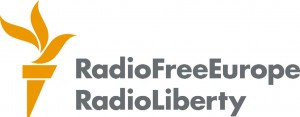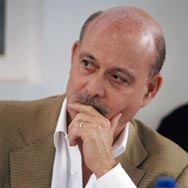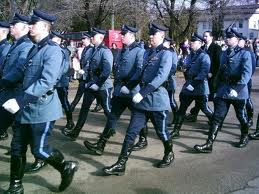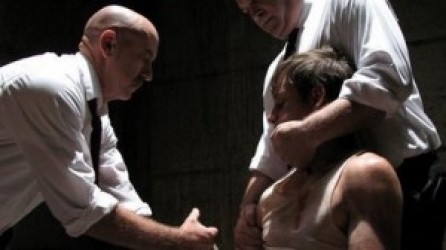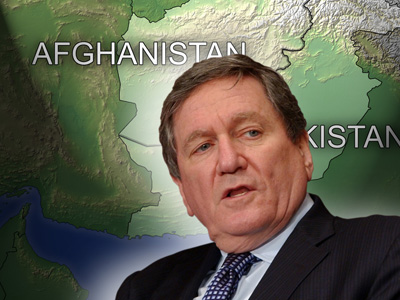Alex Constantine - February 4, 2011
A Tangled Web: Crusade for Freedom, CIA, and Radio Free Asia
By Richard H. Cummings
 In the late 1940s, a diverse group of prominent Americans publicly put forth an enterprising agenda to change the American political landscape. Their visions and dedicated efforts resulted in the Crusade for Freedom, which, for more than ten years, was an intense domestic public relations and media campaign. It evolved not only to arouse the “average” American against the Communist threat, real and perceived, but also to morally, politically and financially support the radio station Radio Free Europe (RFE) in Cold War Germany and, for a few years in the early 1950s, Radio Free Asia (RFA) in San Francisco, California.
In the late 1940s, a diverse group of prominent Americans publicly put forth an enterprising agenda to change the American political landscape. Their visions and dedicated efforts resulted in the Crusade for Freedom, which, for more than ten years, was an intense domestic public relations and media campaign. It evolved not only to arouse the “average” American against the Communist threat, real and perceived, but also to morally, politically and financially support the radio station Radio Free Europe (RFE) in Cold War Germany and, for a few years in the early 1950s, Radio Free Asia (RFA) in San Francisco, California.Millions of Americans throughout the United States willingly and enthusiastically signed “Freedom Scrolls” and “Freedom Grams,“ participated in fund-raising dinners and lunches, attended Crusader meetings, marched in parades, launched balloons with leaflets, participated in writing contests, bowled in tournaments, and otherwise were otherwise active in the belief that they were individually and collectively supporting Radio Free Europe, and for a time Radio Free Asia.
Committee for a Free Asia and Radio Free Asia Established
There was another side to the Radio Free Europe story, a side that was hidden to the American and European public for almost 20 years: according to a secret 1968 CIA report, Radio Free Europe and its sister station Radio Liberty (RL) in Germany were that agency's “two largest and most successful covert action projects in the U. S. effort to break the communist monopoly on news and information in the Soviet Union and Eastern Europe ... the two radios have been covered as privately financed, non-profit American corporations. During that time their funds have largely been provided and their policy controlled by the CIA.”
Radio Free Asia (RFA), a short-lived third and unsuccessful “covert action project,” will be examined in some detail as its fate was directly connected to Radio Free Europe and the Crusade for Freedom.
 On March 12, 1951 the articles of incorporation of the Committee for a Free Asia Inc. (CFA), were filed with the California Office of Secretary of State. Brayton Wilbur, an import-export executive, was the first chairman of Committee for a Free Asia. In announcing the creation of the Committee for a Free Asia, Wilbur said, “The people of Asia must have more of the facts about the suffering that follows Communist aggression. They must also be shown alternative to communism.”
On March 12, 1951 the articles of incorporation of the Committee for a Free Asia Inc. (CFA), were filed with the California Office of Secretary of State. Brayton Wilbur, an import-export executive, was the first chairman of Committee for a Free Asia. In announcing the creation of the Committee for a Free Asia, Wilbur said, “The people of Asia must have more of the facts about the suffering that follows Communist aggression. They must also be shown alternative to communism.”
In the forward to CFA’s “Prospectus” issued in May 1951, Brayton Wilbur wrote, “The purpose of this Committee is to establish channels of direct communication between the people of Asia and the people of the free world everywhere. Through those channels an exchange of thoughts, the hopes and the inspirations of the people of Asia with the people of America and Europe can weld a union of free men which will roll back the dark forces of Soviet imperialism.” The Statement of Purposes in the “Prospectus” included the following:
To promote, aid and assist the cause of individual and national freedom in Asia, as opposed to Communist and other totalitarian doctrines.
To initiate, assist and conduct, directly or indirectly, investigations and studies relating to such cause; and to obtain, collect, analyze, publish, broadcast, disseminate and distribute information relating thereto through any and all media of communication.
To assist non-Communist and nontotalitarian elements in the countries of Asia in realizing and maintaining the ideals of individual and national freedom.
To assist non-Communist and nontotalitarian travelers, refugees and exiles from the countries of Asia in maintaining contact with their fellow citizens for the purpose of keeping alive and promoting the ideals of individual and national freedom; and to make available facilities whereby these travelers, refugees and exiles can contribute to the cause of the maintenance of freedom under law.
To solicit and receive funds for the objects and purposes herein set forth and to administer and use such funds for the promotion of such objects and purposes; or to grant, allocate and appropriate such funds, or any part thereof, to any other organization or organizations for the promotion of such objects and purposes.
Similar to the original incorporation articles of National Committee for a Free Europe, the Committee for a Free Asia would not “engage in carrying or propaganda or otherwise attempting to influence legislation.” Committee for a Free Asia offices were set up in San Francisco and New York.
1951 Crusade Campaign
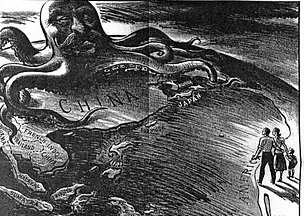 Radio Free Asia (RFA) was included with Radio Free Europe in the fund solicitation activities of the 1951 Crusade campaign. The Advertising Council put out a Crusade for Freedom fact sheet for the American media, in which Radio Free Asia was mentioned in some detail: “Although it is patterned generally after the National Committee for a Free Europe, there are substantial differences because of the more complex pattern of national viewpoints across the Pacific, and because of the different pattern of Red Aggression in Asia. For one thing, CFA is not only engaged in fighting Communism where it has already seized control, but is also waging a preventive battle to keep Kremlin doctrine from spreading to other Eastern nations.”
Radio Free Asia (RFA) was included with Radio Free Europe in the fund solicitation activities of the 1951 Crusade campaign. The Advertising Council put out a Crusade for Freedom fact sheet for the American media, in which Radio Free Asia was mentioned in some detail: “Although it is patterned generally after the National Committee for a Free Europe, there are substantial differences because of the more complex pattern of national viewpoints across the Pacific, and because of the different pattern of Red Aggression in Asia. For one thing, CFA is not only engaged in fighting Communism where it has already seized control, but is also waging a preventive battle to keep Kremlin doctrine from spreading to other Eastern nations.”
On May 2, 1951, General Lucius D. Clay, National Chairman of the Crusade for Freedom, announced two goals for the second annual Crusade campaign: enrollment of 25 million Americans and public contributions of $3,500,00 to build two more “freedom” stations in Europe and begin the construction of Radio Free Asia.
A goal of 1,000,000 signatures of Californians in support of Radio Free Asia, to be enshrined in a future RFA transmitter site, was announced by California Southern Chapter chairman C.B. Tibbets:
“Like the scrolls set in place last year with the opening of Radio Free Europe, the 1951 freedom pledges —signed, sealed and delivered – will serve as propaganda springboards from which American truths will hurdle the Communist curtain.”
Paper for Korea
On August 2, 1951, Brayton Wilbur, chairman of the Committee £or a Free Asia, announced a committee gift to the Korean government of 1,000 tons of newsprint, to make possible the replacement of public school textbooks destroyed by communists in their invasion of Korea.
Radio Free Asia Begins Broadcasting
On September 4, 1951, at 6:30 a.m. local time, Radio Free Asia began live broadcasting on a test basis from a rented studio in the commercial radio station KNBC, downtown San Francisco (it was 10:30 p.m. in China). After the sound of a bronze gong being struck three times and music from Mahler’s “Song of the Earth,” the first broadcast began with these words in Mandarin Chinese, “This is Radio Free Asia...the voice of free men speaking to the people of Asia.”
The initial programs of news and commentary were at first 90 minutes long and divided into three segments in Mandarin, Cantonese and English languages. The programs were broadcast via a leased wire RCA short-wave to Manila, Philippines and from there to China via a directional short wave antenna.
Future US President Ronald Reagan narrated a 1951 fund-raising film in behalf of Crusade for Freedom, Radio Free Europe and Radio Free Asia.
John W. Elwood, the first director of Radio Free Asia, told the press, “Asians in those areas dominated by Communists had had no access to the truth even about occurrences in their own homelands, let alone truthful reports of worlds news events.” Elwood was quoted by Time magazine on September 17, 1951, as saying “Because we have no government ties, we can say anything we damn please.” Time told its readers, “Like its sister organization, Radio Free Europe, R.F.A. was founded by a group of private U.S. citizens who feel that the Voice of America, though effective in its way, is sometimes hampered because of "good & sufficient reasons of national policy."
Committee for a Free Asia chairman, Brayton Wilbur, told the press, “The fundamental purpose of the broadcasting efforts of Radio Free Asia will be to pierce the Iron Curtain of Communism in Asia with factual, accurate and truthful news.” He added, “Eventually Radio Free Asia will beam towards the various parts of Asia programs on agriculture, health and other topics designed to assist the people of Asia and to maintain their courage and will to resist Communism.”
The symbol chosen for Radio Free Asia was a replica of a wooden Asian bell with the slogan “Let Freedom Ring.” Radio Free Asia broadcasts were expanded to three hours in December 1951 and a third Chinese dialect, Hakka, was added to the broadcast languages.
November 1951 Extraordinary Meeting
There was an extraordinary meeting of CIA and the U.S. State Department leadership on November 21, 1951, in the home of State Department official Edward W. Barrett, Assistant Secretary of State for Public Affairs and an early member of the National Committee for Free Europe. Representing the CIA, were Allen Dulles, Frank Wisner, Lloyd, Deputy Chief, Psychological Staff Division, and Tom Braden, Chief, International Branch, Psychological Division, OPC.
One of the items of which the attendees agreed that “Radio Free Asia would undergo no further expansion until the future course of the Committee for Free Asia had been settled in a manner satisfactory to both CIA and State.” The CIA’s Tom Braden said, “RFA is staying right there where it is until they are given further orders.” Barrett said, “In regard to the radio audience in China it was his understanding that there is a small and decreasing audience as the result of Communist repressive measures. He felt that it was better for OPC to put its RFA money into local, non-U.S.-labeled operations in the Far East. He said that we did not need another American voice in the area.“ CIA Director Dulles suggested “RFA be kept going on its present basis along with CFA for next few weeks until the new head of the organization is selected. He should then be brought in for a discussion of this whole operation.”
Christmas Carols
In December 1951, Radio Free Asia prepared a series of Christmas programs of popular Christmas carols that were recorded by the University of California Extension Choral. The programs were intended not only for China but also for Japan, to be broadcast over 118 radio stations of the Broadcasting Corporation of Japan.
“Headache to Communists”
In 1952, Newspaper correspondent John Anderson described the Committee for a Free Asia as “Free Asia Group Headache to Communists”: Working as private citizens and financed by the people and not the government in America and Asia, they attack communism on its own battleground in the Far East, publishing and broadcasting truth where it may be hidden or distorted and exposing the myth of the Communist Utopian dogma.”
Committee for Free Asia and the Written Word
Alan Valentine became president of the Committee for Free Asia in December 1951. He previously had been the president of the University of Rochester, ECA Chief in the Netherlands in 1949-1949 and Director of the Economic Stabilization Agency 1950-1951. Alan Valentine wrote to Free Europe Committee on May 5, 1952, giving some details about the written programs,
Because CFA and the Editorial Department feel that there is utmost urgency in the psychological approach to the anti-communist campaign in Asia, particularly among the younger generation who tomorrow will wield the largest share of political and ideological influence in their respec tive countries, our initial target has been the school age group.
The pamphlet in Chinese, which is to be followed almost immediately by a second, similar in style but varied in content, has been specifically prepared for distribution among younger overseas Chinese in Asia. Copies have been forwarded to CFA’s field office in Hong Kong and CFA’s represen tative in Malaya is taking a sizeable number with him and will explore the best possible means of distribution upon his arrival there.
Similarly, the smaller pamphlets in English and Tagalog have been aimed at elementary school children in the Philippines. A second edition of the pamphlet “Bayan at Bukid” is already in production and is aimed at a high school level of Philippine youngsters. As such, the treatment of content will vary, and Editorial will endeavor in this pamphlet to put across issue s pertinent to the development and furtherance of political thought and individual freedom in the Philippines.
Valentine participated in the May 10-11, 1952 state-private strategy meeting on political or psychological warfare at Princeton University. C.D. Jackson chaired the meeting, with CIA Director Allen Dulles, Charles Chip Bohlen of the State Department, leading officials from Radio Free Europe, the National Security Council, etc. At one point Valentine is quoted as saying,
I think we have to bring to Asians more of a sense of moral conviction on our part – and I underline moral – if we are to convince them that we mean more than just support for our program. Following that, we must be very careful to get maximum participation by the Asians maximum control of individual activities on a partnership basis with the Asian, and emphasize as little as possible our part in the activities.
Our radio program, though important will bulk less large in our over-seas operations than RFE because of its limited effectiveness due to a more limited number of receiving sets, and because there are other devices which may be used more effectively for our area than the spoken word.
We charge ourselves with the mission of bringing back and maintaining freedom and peace from the Kuriles to Korea to about two billion Asians, with a staff most of whom like myself are amateurs.
Doubts about Radio Free Asia
The Advertising Council leadership was doubtful about continuing an advertising campaign for Committee for a Free Asia and Radio Free Asia:
Consideration must be given to our relationship, if any in 1952 to Committee for Free Asia. In 1951, when CFA got organized (with funds supplied by NCFE, as recited in CFA's prospectus, Crusade raised its stated goal from $3 to $3 ½ million to get Radio Free Asia started. This was done largely in deference to the attitude on the West Coast, which tends still to be oriented more towards Asia than toward Europe. This association with RFA doubtless was advantages to Crusade on the Coast, even though we could speak of RFA in only the vaguest terms (it did not begin its broadcasts until September and when it did do so the explosion was inaudible).
The problem of Communism (and combating it) in Asia is considerably different from that in Europe, strategically and philosophically –let alone tactically. It solves no problem to recite this fact to our West Coast friends as a reason why “we” (RFE) don’t add a transmitter aimed at China. Committee for Free Asia is an established fact. It has prestige on the Coast by reason of its membership. But so far no word of its doings has come to our attention, which spells large accomplishment.
Radio Free Asia Ceases Broadcasting
In March 1953, The Central Intelligence Agency reviewed Radio Free Asia’s broadcasting operation and decided to stop broadcasting. The CIA then sent its findings in report dated April 1, 1953, to W. H. Jackson, chairman of The President’s Committee on International Information Activities:
Programs Are Not Heard
Present broadcasts are on a week (10 k.w.) signal, which cannot regularly be heard anywhere in Asia. Although the broadcasts are not heard, they have served a real purpose in that production of them has enabled RFA to build an especially efficient staff, about half of it Chinese. However, CFA has proposed for some time that it be equipped with facilities, which provide a stronger signal, and is now urging that this be done of the broadcasts be terminated. It is clear that further expenditures for programs that are not heard can no longer be justified simply in terms of training.
RFA’s international broadcasts to Mainland China and the Chinese in Southeast Asia are not now reaching the target areas. Either sufficiently powerful transmitting facilities should be provided or the broadcasts should cease.
The decision was made to cancel Radio Free Asia.
Note: The original Radio Free Asia has no connection to the current U.S. government supported Radio Free Asia, which began broadcasting on September 29, 1996. For more information, visit http://www.rfa.org/english/
http://coldwarradios.blogspot.com/2010/11/tangled-web-central-intelligence-agency.html

